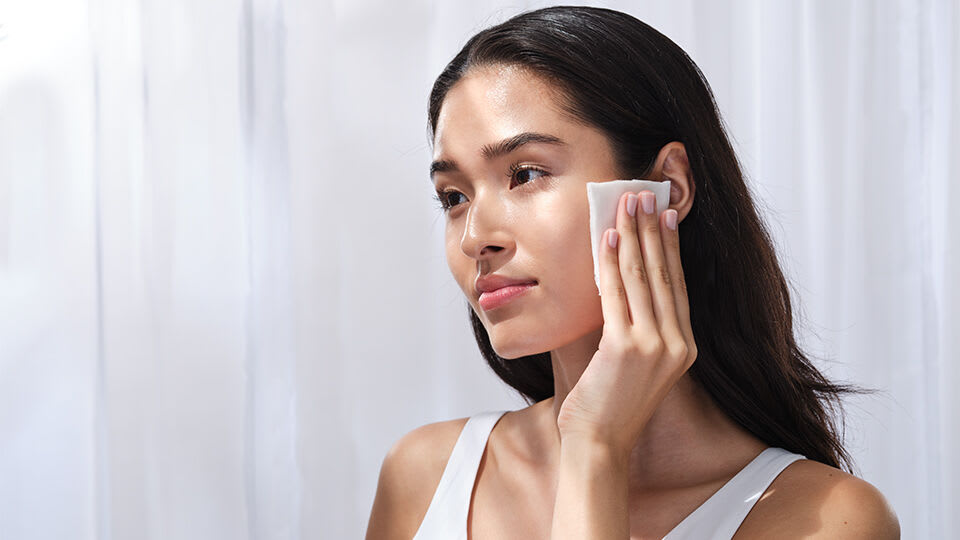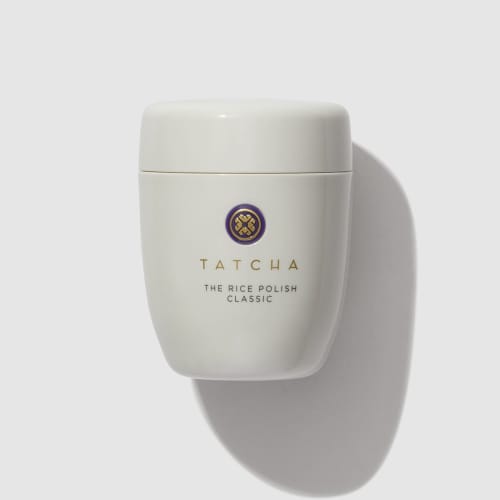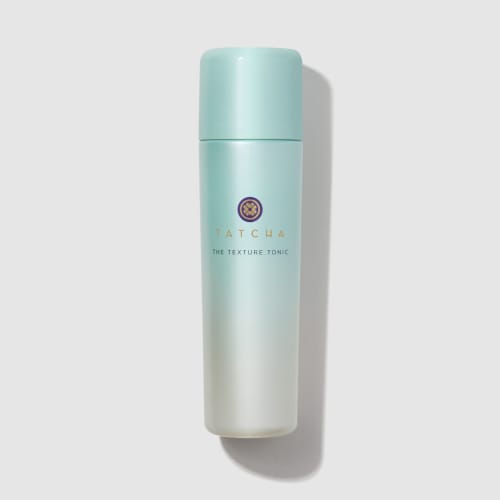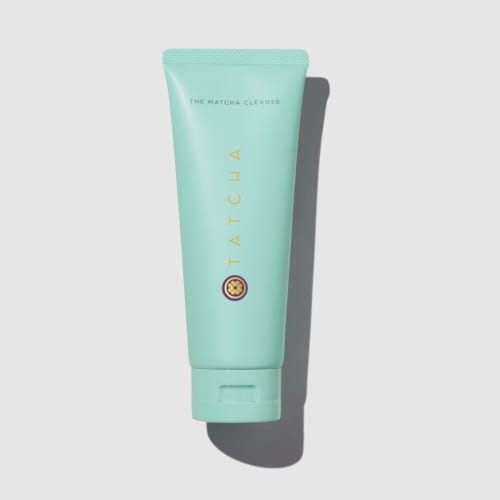Skin texture issues can show up in a variety of ways, from dull areas to oil slicks to scaly patches. Luckily for all of us, there are skincare steps that can be taken to smooth things out.

Your skin’s texture and even your skin type can change slowly throughout our life, and then sometimes all at once. This can be a source of minor annoyance when it comes to skincare, but this relative changeability is what allows skin’s complex systems to function at their best.
Human skin is composed of three layers, each one its own matrix of biological matter. The deepest layer of skin, the hypodermis, is composed of fatty adipose tissues, connective tissues like collagen, and blood vessels. (One of the roles of the hypodermis is to adhere skin to muscles and bones beneath.) The middle layer, or the dermis, is mostly composed of collagen and elastin, along with nerve endings, blood vessels, and a clear, gel-like substance made of glycosaminoglycans like hyaluronic acid.
But when we think of skin texture—or the part of skin we can touch—we’re mostly talking about the epidermis, or the outermost layer of skin. Understanding the structure and function of your skin’s epidermal layer is key to understanding how skin is subject to change; then, you’ll be well-equipped to improve and smooth your own skin texture.
What is the epidermis?
The epidermis is the outermost of the three skin layers. You can think of the epidermis almost like bubbles in a glass of sparkling water: From the bottom, or basal, section of the epidermis, new skin cells are created that float up the various strata, adhering to another one like bricks.
Our epidermis protects our precious insides from the harsh elements—things like UV light, or pollution. Keratin and melanin produced in basal skin cells contribute to the color of our skin and the luster of our hair. Epidermal thickness varies from person to person, and as well as the body, according to the Cleveland Clinic. The epidermis of one’s heel could be the thickness of two credit cards, while their eyelids may be only as dense as a sheet of paper.
It’s an important part of one of our most important organs, and it's constantly exposed. The first line of defense between the dermal structure and planet Earth is the stratum corneum, or skin barrier, the outermost layer of the epidermis. At the top of the skin cell’s upward cascade, this is where most dead skin cells reside, caulked together by a mortar of lipids, proteins, and fats. Just because these cells are dead doesn’t mean the layer is purposeless; in fact, the stratum corneum is integral to the skin’s ability to retain water. As one 2011 journal article concluded, “maintenance of [stratum corneum] hydration, including assisting the SC in self-repair when conditions are adverse, is vital to sustaining healthy function and appearance of the skin.”
The epidermis and skin texture
Skin is highly complex, and the naked eye can only see one part of it: The stratum corneum, or skin barrier. This visible layer is the target of most of our skincare attentions; it’s also the target of texture concerns.
Dead skin cells help compose our skin barrier, but too much of them can be a bad thing. Most of what we consider to be skin texture issues, from visible dullness to touchable roughness, is due to an excess of dead skin buildup. But natural aging and environmental aggressors can also cause these changes in skin texture.
At its baseline, healthy skin should feel comfortable and look relatively clear. Potential imbalances can show up as skin texture symptoms. An overabundance of oil can cause skin to look slick, for example. Chronic dryness can manifest as scaly patches. Most inflammatory skin issues, from acne to eczema, appear as changes in the fabric of skin. Keeping the skin barrier in balance—and the epidermis clean, moisturized, and protected from the sun—is as good defense as any against future skin issues.
Ways to resurface skin texture
When it's time to tackle texture, take it to the skin barrier. Here are a few ways to augment your current skincare routine with steps that can smooth out roughness or otherwise uneven skin texture:
Gentle scrubs. A step up from a good cleanse, a physical exfoliant containing a refining scrub can easily polish away excess dead skin, leaving soft, glowing skin behind.
Peeling acids. Another form of skin resurfacing, called chemical exfoliation, uses acids that dissolve the bonds between dead skin cells. Some of these acids can be found in gentle formulas, like daily exfoliating toners, or in heavier-duty concentrations, like in-office peels.
Mega moisturizers. Many moisturizers incorporate ingredients that are naturally found in skin—one study found visible improvements in texture of the stratum corneum when a product containing ceramides were applied to legs—which is another reason why it’s good to layer on the moisture.
The best skincare for improving skin texture
In the cases of inflammatory skin conditions, like eczema or psoriasis, it’s a good idea to talk to your dermatologist to iron out a treatment plan. Other tests of texture, like those merely caused by dead skin buildup, can be aced by incorporating just one new skincare product or active ingredient, like one of these:
The Rice Polish
Just as we might use friction to polish a household surface, lightly scrubbing—dermatologists warn against scrubbing too vigorously—can help polish our skin texture. The verb itself in appears in the name of one of Tatcha’s best-selling exfoliants, The Rice Polish, a finely milled blend of Japanese rice bran and silk protein. Additional papaya enzymes promote natural skin turnover to instantly reveal a smooth, primed, makeup-ready canvas.
The Texture Tonic
Recent decades have seen the invention of new and exciting exfoliating chemicals that are increasingly effective and safe for skin. Some of these are gentle enough to incorporate into a daily routine. The Texture Tonic, a lightweight toner, is infused with fruit-derived alpha hydroxy acids that resurface skin, as well as niacinamide, a form of vitamin B3 that evens skin tone and tightens the look of pores.
The Matcha Cleanse
Oily skin is a texture unto itself, and can express itself through slick patches of skin or areas where pores seem enlarged. Returning skin to a state of balance is the idea behind The Matcha Cleanse, which performs the task with Japanese superplants that refine and resurface skin. The formula is centered around a form of green tea powder with a high antioxidant level that has been applied as a revitalizing face mask for centuries. Now in a lightly foaming gel cleanser, it’s one rinse to soft, pure skin.
The Indigo Overnight Repair
An intensive treatment can provide major smoothing benefits to skin—especially if it’s left on for a little while. The Indigo Overnight Repair combines a serum and moisturizer into one jar. Bolstered by the anti-inflammatory properties of Japanese Indigo (a centuries-old botanical used for wound healing), this powerful product visibly calms irritation, strengthens skin’s barrier, and balances the microbiome, so you can awaken with skin as strong as you are.





